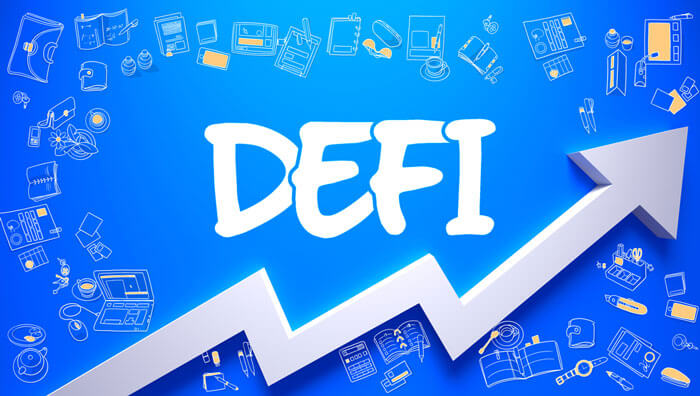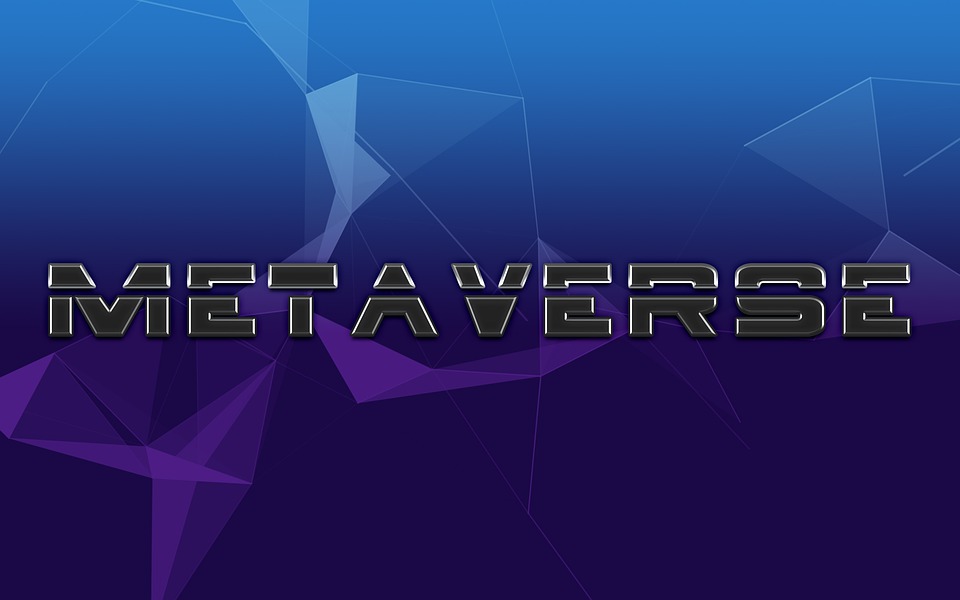Technology
Why Secured Lending Is the Future of Defi
by Author
-
Wednesday, August 31, 2022
409 Views
Secured lending is when an asset (such as cash) is loaned to a person or business, and the borrower must post collateral, an investment that the lender can seize if the borrower defaults on the loan. The collateral provides security for the loan.
As the collateral can be used to repay the loan if the borrower defaults, secured loans are typically less risky (for the lender) than unsecured loans, and therefore interest rates can be lower. Common examples of secured loans include mortgages, which are secured against the value of a property; loans secured against vehicles or machinery, which allow businesses to make large capital investments without the need for all the cash up front; and loans secured against financial assets, such as stocks and bonds.
DeFi is ideally suited to secured lending because tokens can be programmed with smart contracts to automate a significant portion of the process. In addition, there is no longer a need for a bank; tokens enable lenders and borrowers to enter and exit positions instantly; in the event of default, the collateral can be automatically liquidated to pay off the loan, as guaranteed by the smart contract.
How Secured Lending Operates Currently
Today, only regulated financial institutions such as banks engage in lending.
To lend, the lending institution must first have some liquid capital. This can come from depositors, such as those with checking accounts at a bank, a loan from another financial institution, or, in the case of a bank, the liquidity can be created on its books through fractional reserve banking. Now, we are prepared to lend.
To initiate a loan, the credit risk and quality of the collateral are evaluated. If this occurs, the borrower and lending institution will legally agree on the amount, repayment schedule, and contractual right to seize the collateral. Following the agreement, the borrower receives access to the loan, which she repays with interest over time. If the borrower defaults on the loan, the lending institution can seize the collateral and liquidate (sell) it to repay the debt.
The lending institution earns a profit because the interest rate it pays for liquidity (such as customer deposits in the case of a bank) is less than the rate it charges borrowers. This disparity is known as the spread.
Loans secured against financial assets are one type of collateral used in secured lending to illustrate this point. Typically, corporations or wealthy individuals use them to make large purchases or payments without selling the asset used as collateral. For instance, a person may use a $100,000 stock portfolio as collateral to secure a $50,000 loan for home renovations (in this case, the loan is overcollateralized); or a business may use its holdings of government treasury bonds as collateral to finance the acquisition of another business.
How Secured Lending in Defi Operates
In DeFi, there are no middlemen; all transactions are peer-to-peer and facilitated by tokens and smart contracts. Today, DeFi uses liquidity pools instead of lending institutions to facilitate the matching of depositors with borrowers.
A liquidity pool is a supply of tokens held in a smart contract, to which participants can add or remove tokens under certain conditions. Each lender and borrower can interact with the pool without being aware of the existence of the other, creating a two-sided marketplace. This peer-to-pool (or even pool-to-pool) relationship is incredibly potent and partially solves the agency problem, which occurs when a financial intermediary takes advantage of the participants it represents, by replacing the agent with an immutable smart contract.
Let’s examine the role of liquidity pools in the most prevalent form of secured lending in DeFi today: overcollateralized variable rate lending.
A lender deposits a token, such as USDC, into a pool of the same token held by a decentralised application. In return, the lender receives a token representing a claim on a portion of the pool. These are known as aTokens and cTokens, respectively, on the most popular DeFi lending dApps of today, such as Aave and Compound. Suppose the lender wishes to withdraw his funds. In that case, he returns the claim token to the decentralised application, which then sends him back his share of the tokens (such as USDC) held by the pool, which includes his initial deposit plus any fees or interest paid by borrowers.
On the borrow side, the borrower is required to provide additional collateral than the amount borrowed. This involves depositing a token that serves as collateral, such as 1 ETH, into the dApp. If 1 ETH is worth $4,000, she is able to borrow an amount less than that, such as $3,000 USDC. The liquidity of this USDC is derived from the original tokens deposited by the lender. In this scenario, the loan-to-value (LTV) ratio for the borrower is 75%.
If she wishes to regain access to her ETH collateral in the future, she must repay the $3,000 USDC plus interest. If the value of ETH falls below $3,000 plus the interest owed to date, the borrower is liquidated, and the ETH is automatically sold by the dApp on a decentralised exchange such as Uniswap – or may be automatically offered for purchase at a discount by a third party, another peer-to-pool mechanism.
The dApp determines various parameters, such as the list of permitted assets and LTV and liquidation thresholds. Thus, the term overcollateralized variable rate lending! Rari Capital’s Fuse is an intriguing product that was introduced in 2021. Fuse enables anyone to create their own pools with any combination of ERC20 tokens and parameters, while isolating the risk for each pool.
But why borrow if you must have more than the borrowed amount?
In conventional finance, lending secured by financial assets is advantageous because you can borrow money without selling the asset used as collateral, such as a stock portfolio. Similarly, in DeFi, the borrower can gain access to borrowed funds without selling the underlying asset, such as ETH. In both cases, the borrower is willing to pay interest because the transaction is beneficial to them, and the lender earns interest on capital that would otherwise be idle.
The presence of secured lending creates opportunities for leverage, resulting in more liquid markets and optimal capital allocation because participants with strong conviction can borrow and take stronger positions. To learn why this is so beneficial for DeFi, see our blog post Why Lending is Essential for DeFi.
How DeFi improves secured lending
Secured lending is the process of matching liquidity that is not required immediately, such as customer deposits (i.e. long term liquidity), with liquidity that is required immediately, such as a loan (i.e. short term liquidity). The risk of default is protected by collateral, and there is an interest rate spread to encourage participation on both sides of the market.
Automation reduces spread: if all we are doing is matching two sides of a market, it is surely more efficient to do so via automated smart contracts than via intermediaries such as a bank.
As a result, spreads in DeFi are significantly lower, giving depositors higher interest rates and borrowers lower interest rates than is possible in conventional finance. As an example, as of November 2021, Aave pays 2.79 percent interest on lent DAI, the USD stablecoin, and charges 3.96 percent interest to those who borrow. This spread is significantly lower than what a bank would offer.
Tokens enable instant liquidity: through the use of tokens, both sides of the market are significantly more liquid, as each position is represented by a token that can be transferred and settled immediately. This is not possible in conventional finance, as quickly exiting a position can take days and requires lending institution approval.
Additionally, anyone can set up trading of these tokens on a decentralised exchange and, with the proper incentives, can create a liquid market for an otherwise illiquid asset. To learn more about why this is the case, visit Why DeFi is the Future of Exchanges and Trading.
Permissionlessness results in capital equality. As gatekeepers, intermediaries such as banks determine who can and cannot use their services. Even so, the majority of the world’s population does not even have a bank account, much less the ability to use their assets, regardless of their low value, as collateral for a loan! The current economic system is by nature exclusive.
Because there are no permissions in DeFi, all capital is treated equally. This gives everyone access to the same financial services, whether they need a $5 loan or a $500,000 loan (so long as transaction fees remain low). DeFi has the potential to transform global finance in an inherently inclusive manner.
Composability generates novel products and services: in a DeFi ecosystem, all participants, institutions, and dApps reside on the identical blockchain. This means that everything is compatible with everything else, creating new and innovative products and services. Flash loans exemplify this, a new financial primitive not previously possible in conventional finance that can generate extreme levels of liquidity via a lending dApp without credit risk.
Moreover, the power of yield optimization dApps derives from their ability to shift liquidity to locations with the highest yields algorithmically. Composability between yield optimizers and lending dApps is therefore essential if a DeFi ecosystem is to truly flourish – and outperform anything the traditional financial system can muster. To learn why yield optimization is so effective, see Why DeFi is the future of active investing.
What will the future bring?
The above-described lending dApps offer variable interest rates. This is not useful if you require planning or guaranteed cashflows. Numerous dApps, such as Element, have solved this issue by developing derivative products that offer fixed interest within specified risk tolerances.
For DeFi to be the future of secured lending, however, it must solve how “real world” assets are represented in DeFi, requiring clarification on the legal rights and obligations granted to holders of tokenized holdings at a minimum. Only with these assets in token form, as developed by projects such as Atomix, Bon Appetit, and FortunaFi, can DeFi’s automation, capital optimization, and inclusivity capabilities be applied to markets such as the $17 trillion US mortgage industry.
Hire a reputable DeFi development services provider and start your DeFi project to earn profits.






